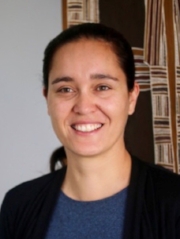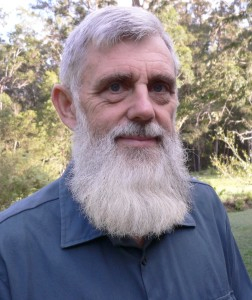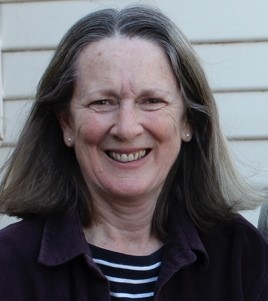A Review of 'A Quaker Prayer Life' by David Johnson - QuakerQuaker
A Review of 'A Quaker Prayer Life' by David Johnson
Posted by
Jim Wilson on 5th mo. 4, 2014 at 11:55am
View BlogGood Morning:
I recently read 'A Quaker Prayer Life' by David Johnson, published by Inner Light Books. I found it a rewarding read, an insipring read, and a helpful work. I posted the following review at amazon:
This short book, 67 pages of actual text, is an articulate, lyrical, and inspirational guide to the prayer of inward silence and stillness as practiced in the Quaker tradition. It is a practical book rather than theological or argumentative. That is to say it is an actual manual that individuals can use to put this type of prayer into practice. For Quakers, it is a great resource. For non-Quakers it is a valuable addition to the practice of contemplation which you may want to integrate into your own contemplative practice.
The author, David Johnson, by using numerous quotations from early Quaker sources, places the prayer of inward silence at the heart of the Quaker tradition. Johnson has clearly spent much time with these early sources and is able to present the essence of the method of the prayer of inward silence in a way that is accessible and, at the same time, sensible. His writing is easy to follow, clear, and the instructions will benefit both newcomers and those who have engaged in this style of prayer for many years.
I also appreciate how Johnson embeds this type of prayer in a Christian context. There are frequent scriptural citations, particularly from the Gospel of John, but other parts of the Bible are referenced as well. And the tradition of apophatic prayer in Christianity is brought in by referencing such works as ‘The Cloud of Unknowing’. I think this is especially important today because among some Quakers there is a tendency to diminish the centrality of Christianity for this type of prayer practice and, among a few, for the Quaker tradition in general. At the same time, Johnson judiciously notes certain commonalities the prayer of inward silence found in the Quaker tradition has with other types of practice, including passing references to non-Christian practices found in, for example, Buddhism. Yet the presentation is appropriately weighted towards the tradition out of which Quaker prayer practice emerged -- Christianity.
‘A Quaker Prayer Life’ in many ways reminds me of ‘A Guide to True Peace’. Both of them are manuals, guides, for the prayer of inward silence in the Quaker tradition. For both of these works the primary focus is instruction in the prayer of inward silence. The ‘Guide’ was published in the early 1800’s and, in a way, I think of Johnson’s book as a kind of renewal of the message of the ‘Guide’ for the generation of the 21st century. The ‘Guide’ was very popular among Quaker for more than a century. One historian wrote that the ‘Guide’ was found in every Quaker household for several generations. I would wish that the same would happen for Johnson’s book for a new generation.
Johnson has done the Quaker community a great service. ‘A Quaker Prayer Life’ is an excellent guide to Quaker Prayer. It offers step-by-step instruction, touches on difficulties, and offers suggestions for daily practice of this type of prayer. It is a great blessing and a work that rewards frequent reading.
A Quaker Prayer Life
David Johnson
Inner Light Books
ISBN: 9780983498063
$12.50 paperback, $18.00 hardback
Views: 570
Like< Previous PostNext Post >
Comment by
Tom E on 8th mo. 11, 2014 at 12:30pm
Jim's thoughts echo my own, and I would like to add a review I wrote recently about this book. I strongly encourage anyone who wants to learn more about the spiritual practices and attitudes of earlier generations of Friends to read this book, which is impeccably researched, and contains a wealth of information:
David Johnson, a geologist by profession, and member of Australia Yearly Meeting, has recently published the book above, which I have personally found of great benefit to my understanding of early Quaker beliefs, and attitudes to prayer.
The only work that I had really come across on this topic before was that of Rex Ambler in Light to Live By. I may be wrong about this, but the kind of approach that he outlines has always struck me as being rather discursive, involving a fair amount of thinking, visualizing and so on, and more like, say, the Ignatian spiritual exercises than the type of ‘apophatic’ prayer recommended by the author of The Cloud of Unknowing, the Jesus prayer, or the Quaker practice of ‘standing in the Light’ (as interpreted by Johnson). Furthermore, Ambler never says all that much about his sources, whereas Johnson’s small book is bursting with quotations from early Friends – Fox, Nayler, Penn, and Penington, as well as many others less well known. So, for me at any rate, Johnson’s book is the more persuasive of the two.
Before discussing some of the characteristics of Quaker prayer, it is useful to consider why Friends dismissed more conventional forms, replacing them with ‘silent waiting’. Johnson argues that it was because they regarded the established churches and their ministers as being in apostasy, and their creeds, prayers and rituals a misrepresentation of the teachings and spiritual guidance of Jesus. He also shows that there seem to be similarities between Quaker meetings and the practices of the primitive ’house churches’, and that Friends probably thought they were recreating many of the features of these very early gatherings – silent waiting, prophesy (akin to individual ministry), ‘careful weighing’, and lack of creeds and liturgy. He takes 1 Corinthians 14: 26-33 (NIV) to illustrate his point:
‘What then shall we say, brothers and sisters? When you come together, each of you has a hymn, or a word of instruction, a revelation, a tongue, or an interpretation. Everything must be done so that the church may be built up. If anyone speaks in a tongue, two – or at the most three – should speak, one at a time, and someone must interpret. If there is no interpreter, the speaker should keep quiet in the church and speak to himself and to God.
Two or three prophets should speak, and the others should weigh carefully what is said. And if a revelation comes to someone who is sitting down, the first speaker should stop. For you can all prophesy in turn so that everyone may be instructed and encouraged. The spirits of prophets are subject to the control of prophets. For God is not a God of disorder but of peace – as in all the congregations of the Lord’s people’.
I don’t know if there are other biblical passages to illustrate the procedures of the house churches. If so, early Friends, with their comprehensive knowledge of the Bible, would have surely known them.
Johnson makes three main points about Quaker prayer. Firstly, it involves a state of preparation, of ‘centring down’, ‘turning the mind to the Light’ or ‘standing still in the Light’. The term ‘centring (or centering) down’ seems to be occasionally viewed with suspicion by some Friends. Not so by Elizabeth Bathurst, who noted in 1679, that ‘This effectual operation of the Spirit…cannot be known without a being centred down into the same.’ The perception of descending into the heart, ‘sinking down to the Seed’, is also well known from some of Penington’s writings, as well as others, such as Sarah Jones (1650) ‘Therefore, come down, come down into the Word of his patience, which is nigh in your hearts, which if you do, he will keep you in the hour of temptation.’
We are left in no doubt that this requires a good deal of work, time and patience. ‘Give not way to the lazy, dreaming mind, for it enters into the temptations’ (Fox, 1653). In some cases, it appears that zealous Friends advocated that this kind of ‘watchfulness’ be extended to everyday life (the Eastern Orthodox use the same word to refer to guarding of thoughts), which reminds us also of passages from Thomas Kelly. Quoting a pamphlet of 1703 by John Bellars, Watch unto Prayer, Braithwaite (1919) says the following:
‘Watchfulness out of meetings is the best preparation for worship within; neither hearing the best preachers, nor a bare turning the thoughts inward when one comes into a meeting, is the true spiritual worship, for the heart within may be a den of darkness, but he that watches in the light will be led into the new Jerusalem, where God and the Lamb are both the light and the temple to worship in, and nothing that defiles can enter’.
This leads naturally into another of Johnson’s main points, that we cannot do the work of purifying our hearts, and approaching God, by ourselves. This work is done partly by God alone, and partly by God strengthening each of us within. This requires repentance and humility.
Repentance is not a word we hear much of these days, and it was good to read Seth Hinshaw’s article about the importance of this, in the last issue of The Call. Johnson would agree, and quotes Stephen Crisp’s journal (1694):
‘So after long travail, strong cries, and many bitter tears and groans, I found a little hope springing in me, that the Lord in his own time would bring forth his Seed, even his elect Seed, the seed of his covenant, to rule in me; and this was given me at a time when a sense of my own unworthiness had so overwhelmed me in sorrow and anguish…and I was taught to wait on God, and to eat and drink in fear and watchfulness,…..’
In this we hear echoes of the Psalms: ‘For thou desirest not sacrifice, else would I give it. Thou desirest not a burnt sacrifice. The sacrifices of God are a broken spirit: a broken and contrite heart, O God, thou wilt not despise’ (Psalms 51: 16-17).
Another important point that Johnson makes is that the early Quakers felt the stirrings of new life arise within them very slowly at first, and committed, ongoing attention was called for. This was not some revivalist evangelical meeting, with all sins washed instantly away. Commentary by our normal human nature was to be resisted, and the call was to stay very low within, very humble, and wait for the faint stirrings of divine life to appear. Penington has plenty to say about this, as in the following passage (one of many similar ones):
‘When God begets life in the heart, there is the savour of it in the vessel, and a secret, living warmth and virtue, which the heart in some measure feels, whereby it is known. Lie low in the fear of the Most High, that this leaven may grow and increase in thee’. (Some Directions to the Panting Soul, 1661).
The Life is renewed every day, and is not something we can feel once, and then assume is there for good. This is perhaps what Conservative Friends mean by the importance of the ‘daily cross’, the necessity for spiritual work within, every day. The writings of early Friends showed the lengthy cleansing and spiritual healing which had to occur (that in Fox’s case lasted for nine years, before he finally understood his mission on Pendle Hill).
Sarah Jones, though, gives tender encouragement for the journey (1650):
‘So cease thy mourning, thou weeping babe, that mourns in secret for manifestations from thy beloved, as thou hast had in dayes past; for I can testifie unto thee by experience, whosoever thou art in that state, that he is bringing thee nearer to him, for that was but milk that he fed thee when thou was weak, but he will feed thee with the Word from whence that milk proceedeth, if thou be willing and obedient to live at home with Jacob, which is to daily retire thy mind; though the gadding, hunting Esau persecutes thee for it, thou shalt receive the blessing in which all happiness and felicity doth consist for evermore’.

Comment by
Jim Wilson on 8th mo. 11, 2014 at 2:33pm
Friend Tom:
Thanks for posting the review. I learned much from reading it. I have the hope that modern Quakers can recover some of these early guides to inward prayer like the pamphlet by Bellars you reference, and the 'Directions' by Penington. My suspicion is that there is a rich and articulate vein of insight and instruction on this type of prayer, but that it has been ignored and sidelined for quite some time. It has been displaced by other concerns, such as activism and politics and the distractions that emerged during the period of numerous schisms.
I also would like to encourage thee to write a brief review for amazon. Reviews at amazon do make a difference. Amazon has an analytical tool that determines which books come up when someone does a search. The more reviews the book has, the higher its placement when a search is conducted. That's why when thee does a search at Amazon the results are not chronological; rather they are arranged by interest and sales. Anyway, if thee has the time, a review would assist the book's placement at Amazon.
Thanks again for the comments,
Jim

Comment by
Tom E on 8th mo. 12, 2014 at 3:47am
Thanks, Jim. And thanks also for the suggestion about a review on Amazon. It's certainly a book that deserves a wide readership.
I quite agree that Quaker writing, from every age, contains much that is useful in terms of insight and instruction. I would like to discover more, for example, about spiritual writing from the Quietist era. Most if this is now almost entirely forgotten, but must be available among the archives. It would make a fascinating project, but at present I have too much 'cumber' to be free to do anything very much!
Best wishes,
Tom









































Helen Gouldsays:
June 29, 2014 at 8:56 pm
I loved David Johnson’s little book “A Quaker Prayer Life” and have used it intensively as preparation for my own daily worship. I believe that this is how the Early Friends prayed, and what power they experienced. Thank you, David, for making available to us these wonderful passages from Early Friends, the Hebrew Scriptures and more. Over the years I have experienced healing, as through worshipping alone and in Meeting I have experienced the Light shining into the dark corners of my behaviour and gradually, or sometimes “searingly”, that darkness ceases. (And from time to time I am made aware of yet another area of darkness). I often experience pain through this process, and also great joy. These days the underlying song in my life, is of gratitude, Alleluia!
Thank you, David for this wonderful book, and Kerry and Wilma for your insights.
Helen Gould
Nanjing, 6 June 2014.Reply
Roger Keyessays:
July 16, 2014 at 6:23 pm
Friends, I am very pleased that David has given us this Ministry. For to me, that is what it is … a Ministry rather than an artful work of literature. There are expressions used by David which I would not use, and there are theological concepts with which I might cavil. And there are even some “typos”.
Over all, he has shown us a way back from the concept of our Worship as a philosophical adventure or meditation, and the notion that ministry in Meeting for Worship might be a lecture on some brilliant philosophical idea that we’ve just thought up inviting a general discussion.
Our Friend has gathered together for us the Ministries of some of our forbears (not gurus, experts, and professors”), and will, I believe, be a handbook for many of us in the Life of Prayer.
With love from Roger Keyes.